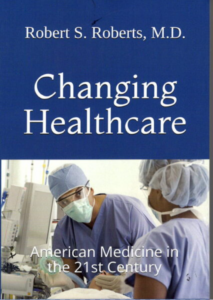
You can’t believe everything you read. That’s a simple statement we all need to be reminded of when reading anything in the media. I was reminded of that recently while reviewing an article published in The Epoch Times.
Author George Citroner leads his article with these words: “Patients who undergo anterior cruciate ligament reconstruction (ACLR) surgery to repair torn ligaments may be at an elevated risk of developing early-onset knee arthritis, particularly because of issues related to the kneecap, according to a new study.”
According to the study, findings show that those who received ACLR surgery had a shift in the positions of their knee bones and joints, causing a change in load on their knees. ACLR surgery, common among athletes, aims to repair torn ligaments—but has also been linked to long-term complications, with more than 50 percent of patients developing arthritis within 20 years.
The study, recently published in the Journal of Orthopaedic Research, included 15 participants around the age of 26 years who had undergone ACLR, and compared their knee movements with those of 10 people with no knee problems. The kneecap, or patella, in those who had surgery moved up by 4.4 to 5.6 millimeters more than the nonsurgical group’s kneecaps, and this changed the way the knee joint moved. The patella was also pushed forward by 5.4 to 6.3 millimeters more during walking, indicating a change in knee structure that could stress the joint. The study also noted that the tendon connecting the knee cap to the shinbone was an average of 8.9 millimeters longer in ACLR patients than in the healthy group.
Among the ACLR participants, nearly half had an abnormally higher knee cap, also known as patella alta, which may put excessive stress on parts of the knee that are not used to handling load. According to researchers, a higher-riding patella may contribute to the development of knee osteoarthritis by shifting the load-bearing areas between the patella and the femur to regions of cartilage unaccustomed to load and leaving previously loaded regions unloaded.
“If this condition existed prior to the injury, then it may be a predisposing factor for ACL injury,” corresponding author Marcus G. Pandy, of the University of Melbourne in Australia, told The Epoch Times. “Alternatively, if the condition arose as a result of surgery, then it may help to explain the high rate of knee osteoarthritis seen after ACLR.” According to Pandy, the key takeaway is that people who have undergone ACLR have an abnormally longer tendon in their knees, causing a higher-than-normal kneecap position.
What’s wrong with this study?
Dr. James Penna, chair of the Department of Orthopaedics and Rehabilitation at Stony Brook Medicine, disagreed that ACLR surgeries could be causing a longer knee tendon. The angle of the knee upon impact with the ground varies between individuals who have had an ACL injury and those who haven’t, Penna said.
The researchers who conducted the study raised the question about whether it’s the injury or reconstruction that can lead to elongation of the patellar tendons. Penna disagreed that the longer tendon in the knee could be caused by the surgery. “It doesn’t, it can’t,” he said. He believes the researchers simply happened to have patients with naturally longer tendons in their sample.
Pandy and team wrote that further research is needed to determine the cause of the longer knee tendon in individuals who have undergone ACLR surgery. The researchers didn’t compare those who received ACLR surgery with those who didn’t—this would be the next step, according to Pandy.
My Opinion
It has been well known for nearly fifty years that individuals who sustain ACL injuries are susceptible to developing post-traumatic arthritis in that knee for multiple reasons. The rupture of the anterior cruciate ligament (ACL) is a significant trauma to the knee and is usually associated with other injuries such as a torn medial and or lateral meniscus, collateral ligament injuries, as well as articular cartilage damage. Such injuries will lead to traumatic arthritis in most patients whether or not they ever have ACL reconstructive surgery.
The premise of the Pandy team study that ACL reconstructive surgery leads to alteration of the length of the patella tendon is not credible. Although there are several different methods used for ACL reconstruction, I know of no methods that alter the pre-injury length of the tendon. That means the observation in their study that patients with longer tendons were more likely to develop arthritis is simply an indication that those individuals were at higher risk for developing arthritis, regardless of whether or not they had ACL reconstruction.
The limited size of their study, only 15 patients, means little can be learned from the results of such a study. The only possible conclusion of this study is that patients with longer patella tendons may possibly be more vulnerable to sustaining ACL injuries that those with normal length patella tendons. However, a much larger study group would be needed to draw any meaningful conclusions.
If you are facing ACL surgery, the main thing you should realize is that you are at higher risk of developing traumatic arthritis than individuals without ACL injuries. The surgery is done to stabilize your knee, which should reduce, but not eliminate, your risk of developing arthritis.


